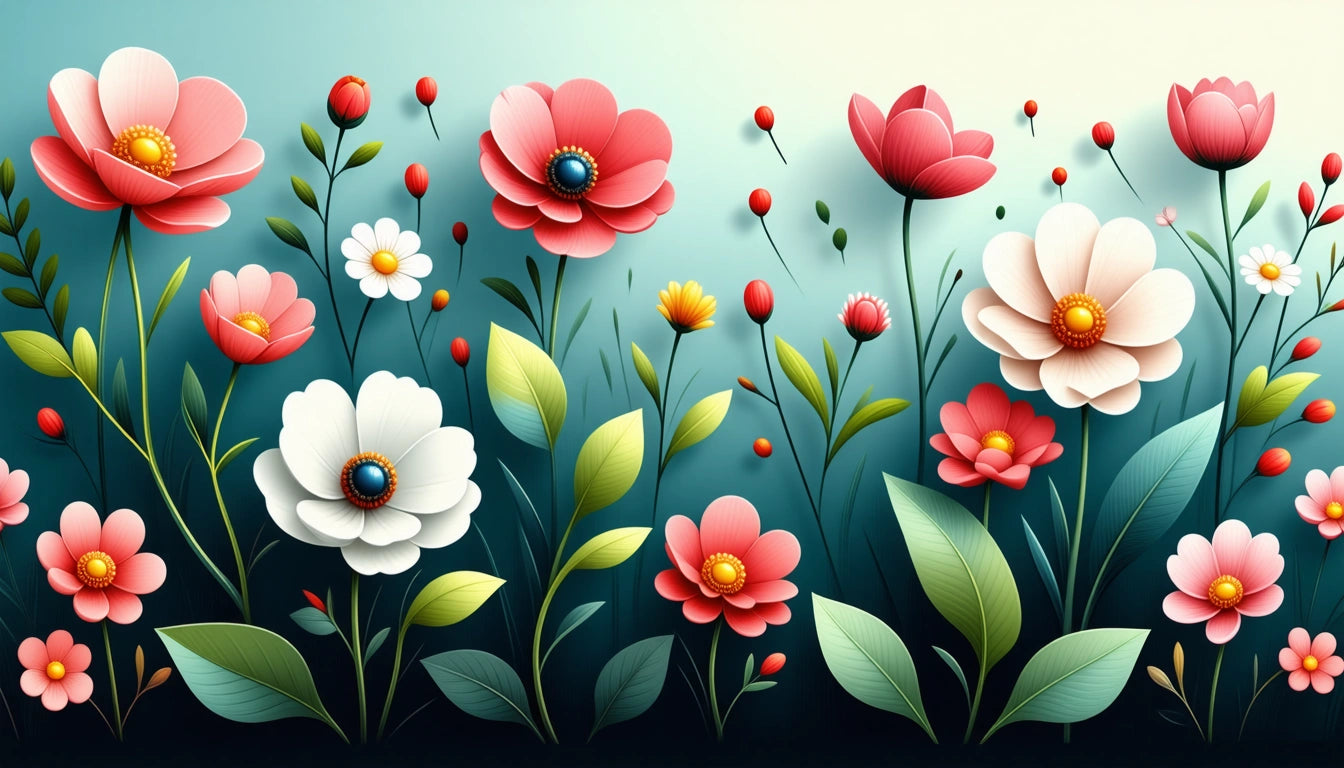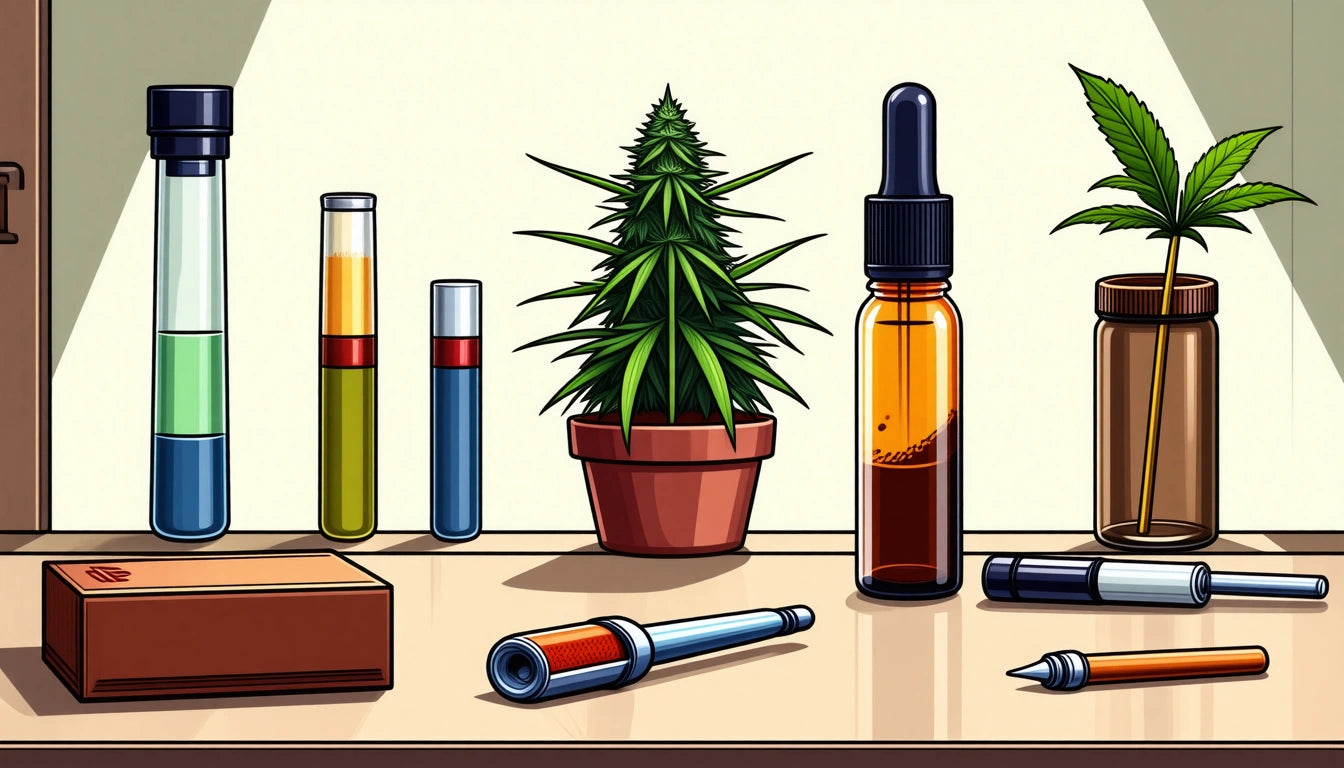Table of Contents
Understanding Flower Food: Ingredients and Alternatives
Flower food plays a crucial role in extending the life and maintaining the vibrancy of cut flowers. Whether you've received a beautiful bouquet or are cultivating your own blooms, understanding what flower food is made of and what alternatives exist can help you maximize the longevity of your flowers. This guide explores both commercial flower food ingredients and effective household substitutes you can use when commercial options aren't available.
What Is Flower Food: Composition and Purpose
Flower food, also called flower preservative or cut flower food, is a specialized mixture designed to nourish cut flowers and extend their vase life. It addresses three primary needs of cut flowers: nutrition, bacteria control, and pH balance. Just as cannabis flowers have specific nutritional needs during growth, cut flowers require proper care after harvesting to maintain their appearance and longevity.
The fundamental purpose of flower food is to simulate the natural environment that flowers would have if still attached to their parent plant. This includes providing essential nutrients, preventing bacterial growth that can clog stems, and maintaining the optimal acidity level for water uptake.
Commercial Flower Food: Key Ingredients
Commercial flower food typically contains three main components:
- Sugar (carbohydrate source): Provides energy to the flowers, replacing the nutrients they would normally receive from the plant.
- Biocide (antimicrobial agent): Prevents bacterial growth in the water, which can block the stems and prevent water uptake.
- Acidifier: Lowers the pH of the water to improve water flow up the stem, similar to the slightly acidic conditions preferred by plant roots.
Common specific ingredients found in commercial flower food include:
- Sucrose (table sugar)
- Citric acid
- Aluminum sulfate
- Quaternary ammonium compounds
- Potassium chloride
- Sodium hypochlorite (bleach in small amounts)
Homemade Alternatives: What Can I Use as Flower Food
When commercial flower food isn't available, several household items can serve as effective alternatives. These DIY solutions aim to replicate the three main components of commercial flower food:
Sugar-Based Solutions
The most common homemade flower food recipe combines:
- 1 teaspoon sugar (provides energy)
- 1 teaspoon bleach or vodka (prevents bacterial growth)
- 2 teaspoons lemon or lime juice (acidifies the water)
- 1 quart (4 cups) of warm water
Soda Method
Another popular alternative uses clear soda:
- 1 part clear soda (like Sprite or 7-Up, not diet)
- 3 parts water
The sugar in the soda provides nutrition while the citric acid helps maintain the proper pH level.
Specialized Formulations for Different Flower Types
Just as different cannabis flower strains have unique characteristics, various cut flower types benefit from specialized food formulations:
Bulb Flowers (Tulips, Daffodils)
Bulb flowers often benefit from a slightly higher sugar concentration. For these flowers, consider:
- 2 teaspoons sugar
- 1 teaspoon bleach
- 2 teaspoons lemon juice
- 1 quart water
Woody Stem Flowers (Roses, Lilacs)
Flowers with woody stems may benefit from additives that help with water uptake:
- 1 teaspoon sugar
- 1 teaspoon bleach
- 1 teaspoon vinegar
- 1 quart water
For processing larger quantities of plant material, specialized equipment like commercial grinding machines for plant processing can be useful for preparing stems for better water absorption, similar to how fresh-cutting stems at an angle improves uptake.
Effectiveness Comparison: Commercial vs. Homemade Solutions
When comparing commercial flower food to homemade alternatives, several factors come into play:
Longevity Benefits
Commercial products typically extend vase life by 7-14 days, while homemade solutions generally provide a 5-10 day extension. The precise formulation of commercial products gives them a slight edge in effectiveness.
Cost Considerations
Homemade alternatives cost pennies per use, making them significantly more economical than commercial options. For regular flower enthusiasts, this cost difference can add up substantially over time.
Convenience Factors
Commercial products offer the convenience of pre-measured packets with precise formulations. Homemade solutions require gathering ingredients and measuring, but use common household items that are usually readily available.
In terms of overall effectiveness, commercial products have a slight edge due to their optimized formulations, but homemade alternatives can perform nearly as well when properly prepared. The choice often comes down to convenience versus cost savings.
Flower Food Best Practices for Optimal Results
Regardless of whether you use commercial flower food or homemade alternatives, following these best practices will help maximize the life of your cut flowers:
- Change water every 2-3 days: Fresh water prevents bacterial buildup, similar to how proper storage extends the life of cannabis edibles.
- Re-cut stems: Cut approximately 1 inch off stems at a 45-degree angle every few days to improve water uptake.
- Remove foliage below water: Submerged leaves decay quickly and promote bacterial growth.
- Keep flowers cool: Display arrangements away from direct sunlight, heat sources, and ripening fruit (which releases ethylene gas that accelerates flower aging).
- Use clean vases: Wash vases thoroughly between uses to remove bacterial residue.
By understanding what flower food is made of and implementing these best practices, you can significantly extend the life of your cut flowers, whether using commercial preservatives or household alternatives. The key is consistency in care and attention to the fundamental needs of cut flowers: nutrition, bacteria control, and proper pH balance.











Leave a comment
All comments are moderated before being published.
This site is protected by hCaptcha and the hCaptcha Privacy Policy and Terms of Service apply.